Here’s Why: The Chronograph Is The New Tourbillon
Imagine the following scenario: one of the “hardest” mechanisms to build in watchmaking, the tourbillon, is now found in nearly every major brand’s lineup (and those of many minor brands) and in such a variety of watches that the most affordable Swiss tourbillon is currently priced lower than a new base-model Toyota Yaris (which starts at $15,635).
A Chinese tourbillon can be had for less than a Hamilton Jazzmaster.
The tourbillon has become so common that it’s actually beginning to be strange to see an exposed balance wheel that isn’t rotating in a tourbillon!
The scenario I described is no fantasy, but rather the current state of affairs in the watchmaking world. When you take the now-ubiquitous appearance of tourbillons across the industry and combine it with the fact that most educated WIS know that a tourbillon is, usually, only included for the prestige and not for any measurable improvement in chronometric performance (barring some very specific watches from very specific brands), the luster of the tourbillon begins to fade.
Of course, its widespread use means that now more than ever, watch lovers all over the world may be able to finally own and appreciate what was once an extreme rarity in a wristwatch.
But I do feel the industry is nearing maximum tourbillon saturation, with the smartest watchmakers turning to other mechanisms for increased wow factor and brand visibility. Given the widespread use of high-tech CNC mills, lathes, wire-EDM machines, silicon manufacturing, and advanced CAD modeling, complicated mechanisms aside from the tourbillon are becoming the bread and butter for creative brands and individual watchmakers alike.
But unique time displays or superfluous mechanisms that don’t add chronometric value or additional information for the wearer only go so far. Watchmakers and engineers wanting to make a difference look to the problems of previous designs, old mechanisms, and stale ideas to find the next revolution or, at the very least, a way to prove their own abilities in creating something new.
I feel that 2017 is a great example of how the industry is looking for the next “mechanism of the decade” to take over for the oversaturated tourbillon. Based on the most popular releases of the year, it is possible that the almighty tourbillon may about to be usurped by something new and rather old at the same time: the chronograph.
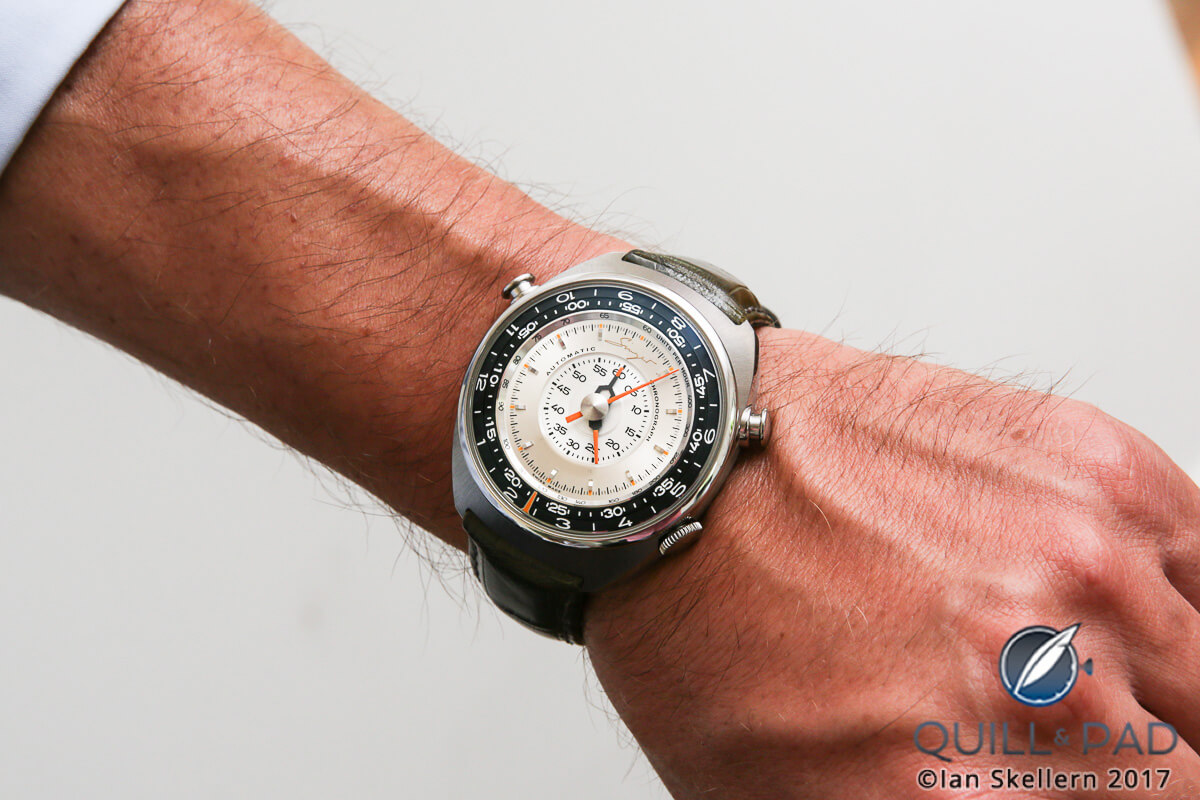
Singer Reimagined Track 1: a new chronograph with a very unique way to display the timings
In this installment of my “Here’s Why” series, I explore why the chronograph is the new tourbillon.
Here’s why: the chronograph IS the new tourbillon
SIHH and Baselworld proved to be a great showcase in 2017, even amidst fears of a continued slump, that innovation and creativity are not on holiday.
Loads of fantastic watches were launched, including, of course, numerous (not to mention sensational) tourbillons all over the place (see SIHH 2017 Round Table: What We Liked And What We Didn’t Like and Baselworld 2017 Round Table: What We Liked And What We Didn’t Like).
But this year felt like a shift had been made to something new, something that might be more accessible to the (relatively) common person. Instead of a parade of tourbillons (and its horological cousins: minute repeaters and grand complications) in every presentation, new pieces focused on more realistic price points, affordable complications, and, best of all, innovative, creative, or just downright interesting chronographs.
They appeared from everywhere: established brands, independents, and even movement specialists. But what stood out to me was that these weren’t all redesigned versions of earlier pieces or new designs with tired movements. Instead, there were many completely new chronograph movements in a variety of styles. And of those new movements, there were several that sought to improve or reinvent the actual chronograph mechanism in part or whole.
One might think that the established brands would play it safe while the younger avant-garde brands would push boundaries, but it wasn’t the case as brands like Zenith and Ulysse Nardin dropped amazing new chronographs right alongside independents like watchmaker Hajime Asaoka and movement specialist Agenhor.
Parmigiani, Montblanc, Hublot, Tutima, and others all developed new chronograph movements that either honored the past or revived lost mechanics (see Give Me Five! 5 Fantastic Manufacture Chronographs From Baselworld 2017 By Patek Philippe, Fabergé, Louis Moinet, Tutima And Glashütte Original).
It really is a good time to be in the market for an interesting chronograph.
The movements ranged from rather average looking to heart-stoppingly beautiful to mind-bendingly complicated.
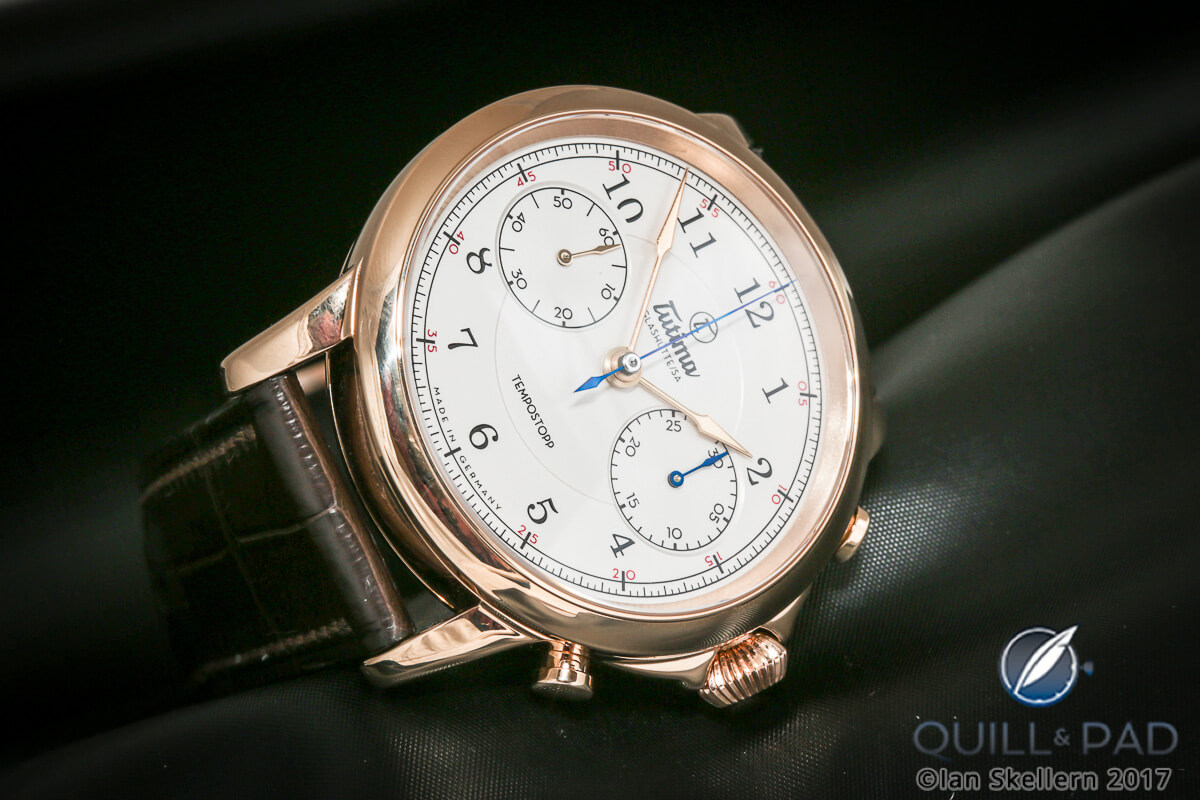
Tutima’s Tempostopp flyback chronograph recreates legendary German-made Caliber 59 in a modern way
Tutima launched the Tempostopp, which recreated the legendary German-made Caliber 59 in a modern way, giving us the exquisite Caliber T659 (see Tutima Tempostopp Flyback Chronograph: A Moving Homage To The History Of Glashütte).
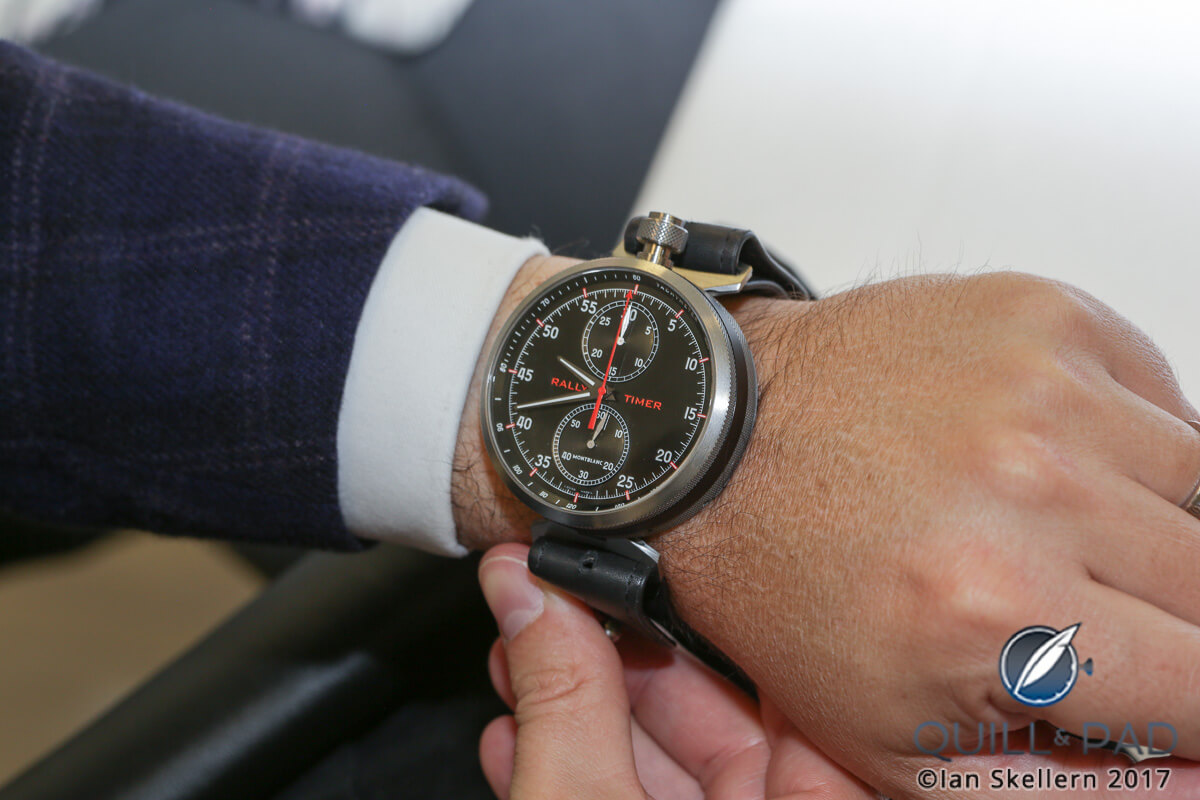
Montblanc Timewalker Chronograph Rally Timer Counter Limited Edition 100 on the wrist
Montblanc recreated its legendary Rally Timer stopwatch by transforming it into the Timewalker Chronograph Rally Timer Counter wristwatch, resulting in the awesome Caliber MB M16.29 (based on the original Minerva Caliber 17.29), which also found its way into the 1858 Chronograph Tachymeter Limited Edition (see Montblanc’s 2017 TimeWalker And Bronze 1858 Watches: Sporty And Automotive With A Healthy Side Of Nostalgia).
The awesomeness of 2017 vintage chronographs
These are great examples of vintage re-imaginings, but the awesomeness of 2017 chronographs doesn’t end there.
Parmigiani developed its very first integrated chronograph movement, which also happens to be a vertical clutch, column wheel, split-seconds chronograph with a movement architecture that is superb.
Found in the 2017 Grand Prix d’Horlogerie de Genève-winning Tonda Chronor Anniversaire, Caliber PF361 shows that brands are still willing to invest in creating new chronograph movementa unique to themselves. Hublot did the same with the Techframe Ferarri Tourbillon Chronograph and its Caliber HUB3611, a very aggressive take on the monopusher chronograph.
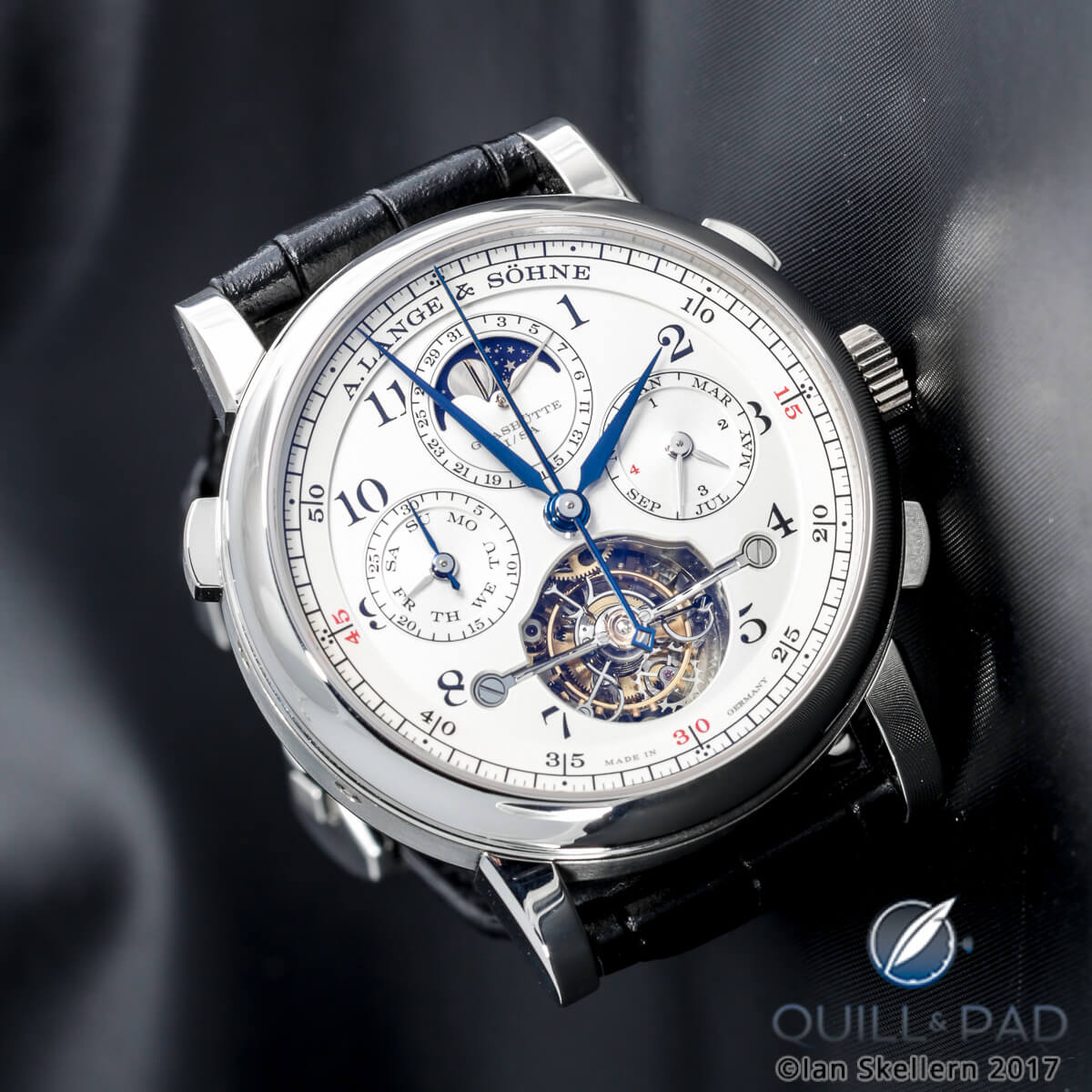
A. Lange & Söhne’s Tourbograph Perpetual Pour le Mérite features a new movement: Caliber L133.1
The imitable A. Lange & Söhne introduced a new Tourbograph this year, and like all new watches from A. Lange & Söhne it features a new movement: Caliber L133.1, which combines a fusée and chain, tourbillon, split-seconds chronograph, and perpetual calendar.
This particular movement might have been the least surprising of the OOTW (out-of-this-world) movements released this year because it is rather typical of A. Lange & Söhne to drop incredible new movements every year (as they say at Lange, “new watch, new movement”), especially with a chronograph function.
Independent self-taught Japanese watchmaker Hajime Asaoka released his very first chronograph, and the movement is definitely an interesting and creative take on the classic column wheel chronograph.

Hajime Asaoka Chronograph
Inspired by the historic Venus 140 caliber, Asaoka turned it on its head and displayed the chronograph mechanism on the dial in a very unique layout due to the base movement design he had already developed. This led to a fantastic mechanical display that any WIS could stare at for hours.
This is also one of the more impressive releases when one takes into consideration that developing a chronograph movement is very time consuming and expensive and that Asaoka is a single, self-taught watchmaker.
Wait, there’s more!
Zenith, which has a history in developing groundbreaking chronograph movements, released the Defy El Primero 21 featuring the awesome El Primero 9004 caliber, a dual-balance, dual-gear train, 1/100th of a second chronograph with balances sporting hairsprings made from carbon-matrix carbon nanotube composite.
The time gear train runs off a standard 5 Hz balance, while the chronograph gear train runs off the 50 Hz (360,000 vph) balance that allows the sweep second hand to rotate around the dial in one full rotation every second. And in what is becoming typical Zenith fashion, the Defy El Primero 21 is rather affordable for the technical accomplishments inside, ranging in price between $9,600 and $11,600.
It is hard to imagine something being more incredible than that, but 2017 is all about shattering expectations in how awesome things can get. Ulysse Nardin jumped on the chronograph map this year with the Marine Regatta, a stunningly clever solution to a decades-old problem: how to count down to zero and then start counting back up without any interaction from the wearer.
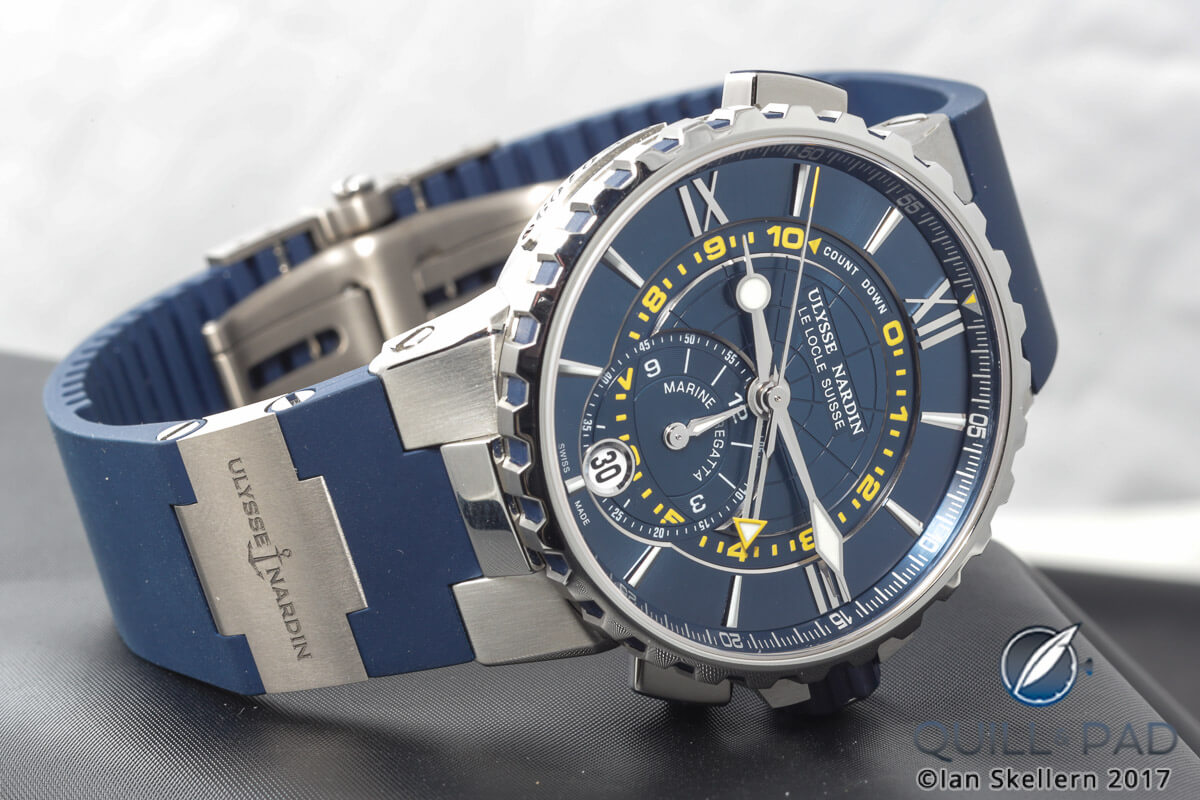
Ulysse Nardin Marine Regatta
The newly released Ulysse Nardin Marine Regatta – which justifiably won the Sports Watch prize at the 2017 Grand Prix d’Horlogerie de Genève 2017 – features a programmable countdown chronograph timer that, thanks to a very clever reversing mechanism, runs to zero for the regatta start and then switches directions to start counting up to keep track of the race.
The ingenious solution inside the Marine Regatta could prove useful in other chronograph applications, not just for the sport of yachting.
And just like the way that Ulysse Nardin looked at the movement and found a solution for that problem, movement specialist Agenhor looked over the entire chronograph mechanism and found solutions for nearly every problem associated with chronographs in general. The result was the AgenGraphe – and, oh, boy, what a development.
The incredibleness of the AgenGraphe is so extensive it literally is too much to explain here. Never fear, though, because our amazing Ian debuted the AgenGraphe with a detailed explanation in The AgenGraphe by Agenhor: The Most Significant Chronograph Since The Invention Of The Chronograph.
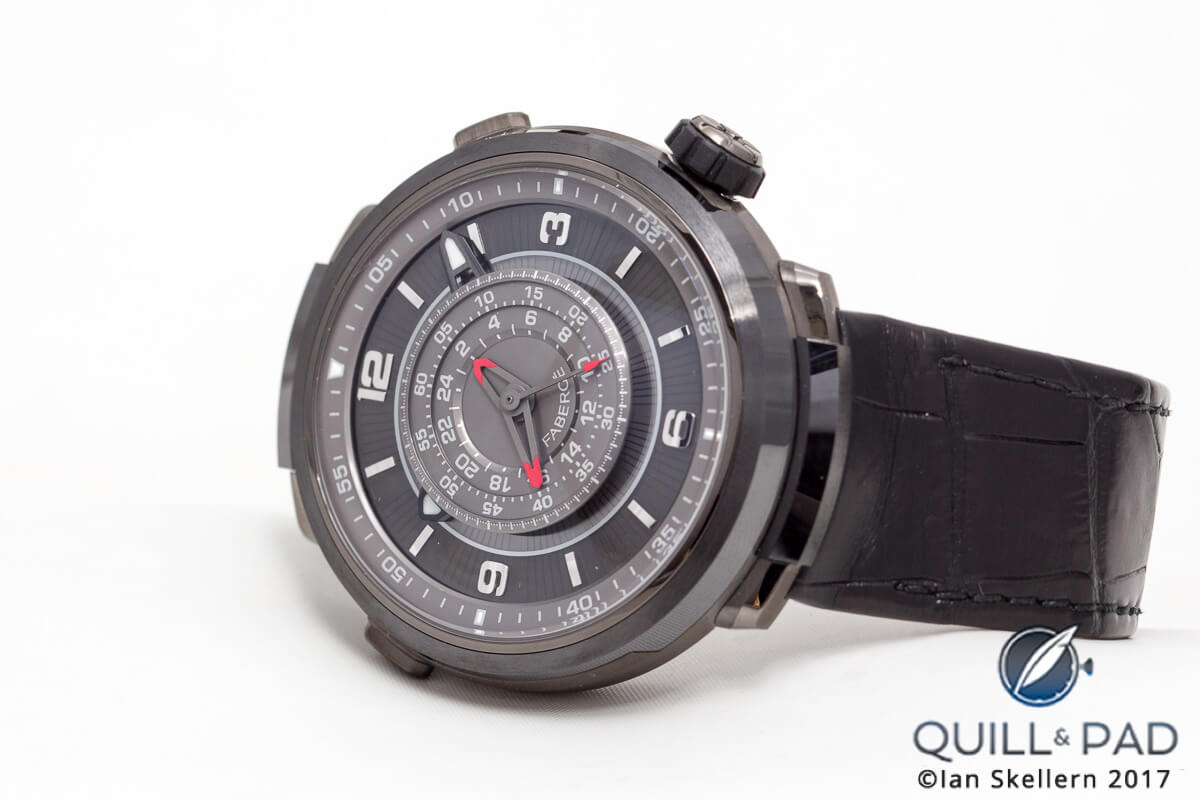
Fabergé Visionnaire Chronograph in ceramic/titanium
In short, the AgenGraphe sought to fix multiple issues with chronographs including legibility of the readouts, clutch stutter, amplitude loss, power reserve loss, excessive wear, shocks from operation, and noise from the automatic winding mechanism. The movement fixes all those things and more and looks incredible while doing it.
Of course, Agenhor doesn’t technically make watches, so the movement found its way into two pieces from other brands this year: the Singer Track 1 and the Fabergé Visionnaire Chronograph. This meant there were multiple ways to enjoy and experience the most innovative chronograph movement of the year, and it showed that brands saw the potential of the movement.
How chronographs change the future
With the release of the AgenGraphe, Ulysse Nardin Marine Regatta, Zenith Defy El Primero 21, and all the other new chronograph movements, the shift away from the crutch of the tourbillon is gaining speed.
Brands are clearly seeing the benefit to developing a new chronograph movement as a way to have something unique, to try new ideas, and to focus on a mechanical achievement that arguably has much more use than many complications – and definitely more function than 95 percent of all tourbillons.
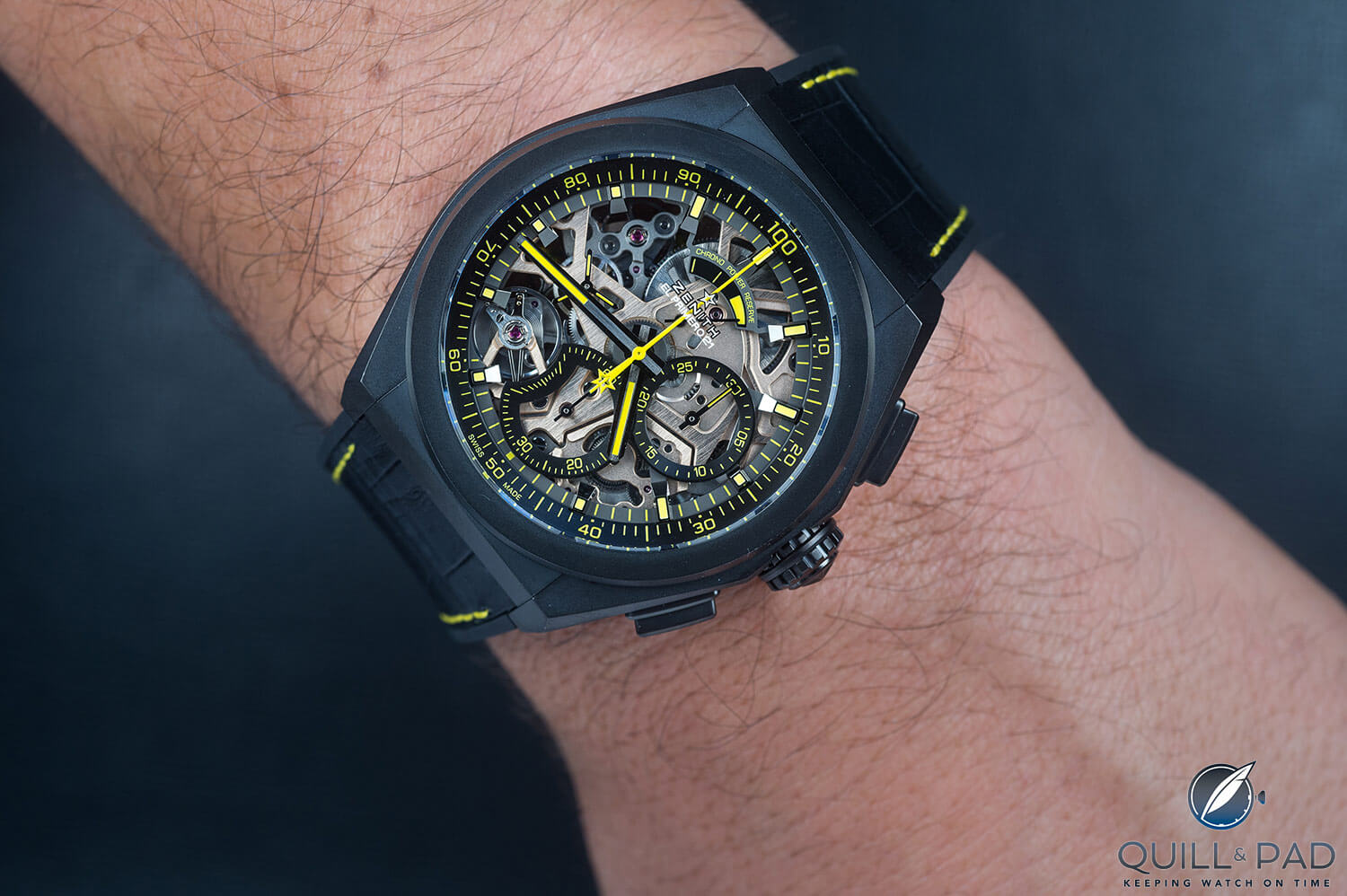
Zenith Defy El Primero 21 for Only Watch 2017
With that, it must be said that the ever-popular tourbillon isn’t going anywhere anytime soon; instead it may become a staple for a certain segment of watches. But as brands start looking for other ways to differentiate themselves, they very well might start looking toward the complex but useful chronograph. Given that it is nearly as difficult to produce as a minute repeater, but has much more functional in use for the wearer, the chronograph seems like the best place to direct research and development budgets.
The special way that chronograph movements mechanically interact with the user – much more than any other complication – could lead to advances in sturdy and reliable mechanisms that can take a beating and continue performing beautifully.
This has always been a problem in watchmaking: creating a mechanism for a person to interact with that isn’t too easily broken. The delicate nature of timepieces is usually protected from the user, and minute repeaters, perpetual calendars, and chronographs are always at risk of damage due to improper use.
Chronographs provide the best avenue for testing out ideas to alleviate these weak spots and could directly influence movement design across the board. Really, chronographs are probably the most important complication created for wristwatches, since they have the highest objective usefulness.
Even disregarding the chronograph’s usefulness, the complexity cannot be ignored. It is common practice nowadays for watch brands and young watchmakers to produce a tourbillon to prove they have what it takes to be a technical watchmaker beyond basic time and date movements.
But as that becomes a stepping stone that nearly everyone has stepped on by this point, there needs to be the next step. I think Hajime Asaoka proved that, at least in his mind, the chronograph is the next logical challenge for technical watchmaking skill. And I must agree.
I think the relative increase in new chronograph movements proves that in the watchmaking industry, the new must-have complication may just be the in-house chronograph.
Whatever form it takes, creating a new chronograph movement is a very difficult feat, and as it is widely considered nearly as difficult as a minute repeater to design and construct, more and more brands and watchmakers will undertake the challenge to be one of the few to create a new chronograph movement.
Eventually, the market will be flooded with unique chronographs, and once we reach peak chronograph saturation, the next “complication du jour” will be chosen (my guess is the perpetual calendar), and the cycle begins again.
The prospect of this cycle continuing gives me hope for the future of the industry, as it should you. Until then, I am going to enjoy seeing all the new chronographs that come along, and where the inventions already developed lead.
You might also enjoy The Enticing Qualities Of “Entry-Level” Tourbillons.
Leave a Reply
Want to join the discussion?Feel free to contribute!



Interesting discussion! And, whilst chronographs are certainly more useful than tourbillons, I can’t remember the last time I used my Speedmaster as anything other than an attractive and fairly well-priced time-keeper! Personally, my heart lies mostly with simple time-only watches (perhaps plus a power reserve – like my much loved 1815 up/down – and, if I love the rest of the watch enough, a date) and I’d love to see lots of development of new escapements, clever geometries etc. Just not as sexy as the more complex thingies, I guess!
Totally agree with you! The market is saturated with complications in general, including chronographs (albeit most with off-the-shelf movements like the 7750). Let’s face it. 99% or complications are pretty much useless anyway. I’d prefer to see more basic three-handers and day/date models with advancements in core movement functionality, ie. more accuracy, better power reserve, more advanced materials, more unique ways of displaying the time, etc.
Thank god, I call it tourbillonitis, a disease where you slap in tourbillon in a watch and charge 40k and up for this feature (I’m not calling it a complication). I do love the change in direction to the chronograph which I think is a great thing. I like the direction of offering more features for a less exclusive price as I think the industry needs to attract more young people to the mechanical watch world. One the whole I like where this is headed and I’m a huge fan of the Singer Track One. Oh and I love that Ulysse Nardin Marine Regatta, great watch for a great price. Great Article.
As history does follow a certain pattern of change. One era ends slowly, and another begins. That’s why collectors have disciplines of curation.
The era ends with 1993 to 2017, of tourbillons…with Greubel Forsey and Omega’s prototype fetching the 1 million CHF magic mark at the Philip’s auction this week.
Josh,
Nice piece. Well written and researched. Totally agree. Never much liked tourbillons–they didn’t do much for the time keeping and ruin the look of the most beautiful dials.
–Chris